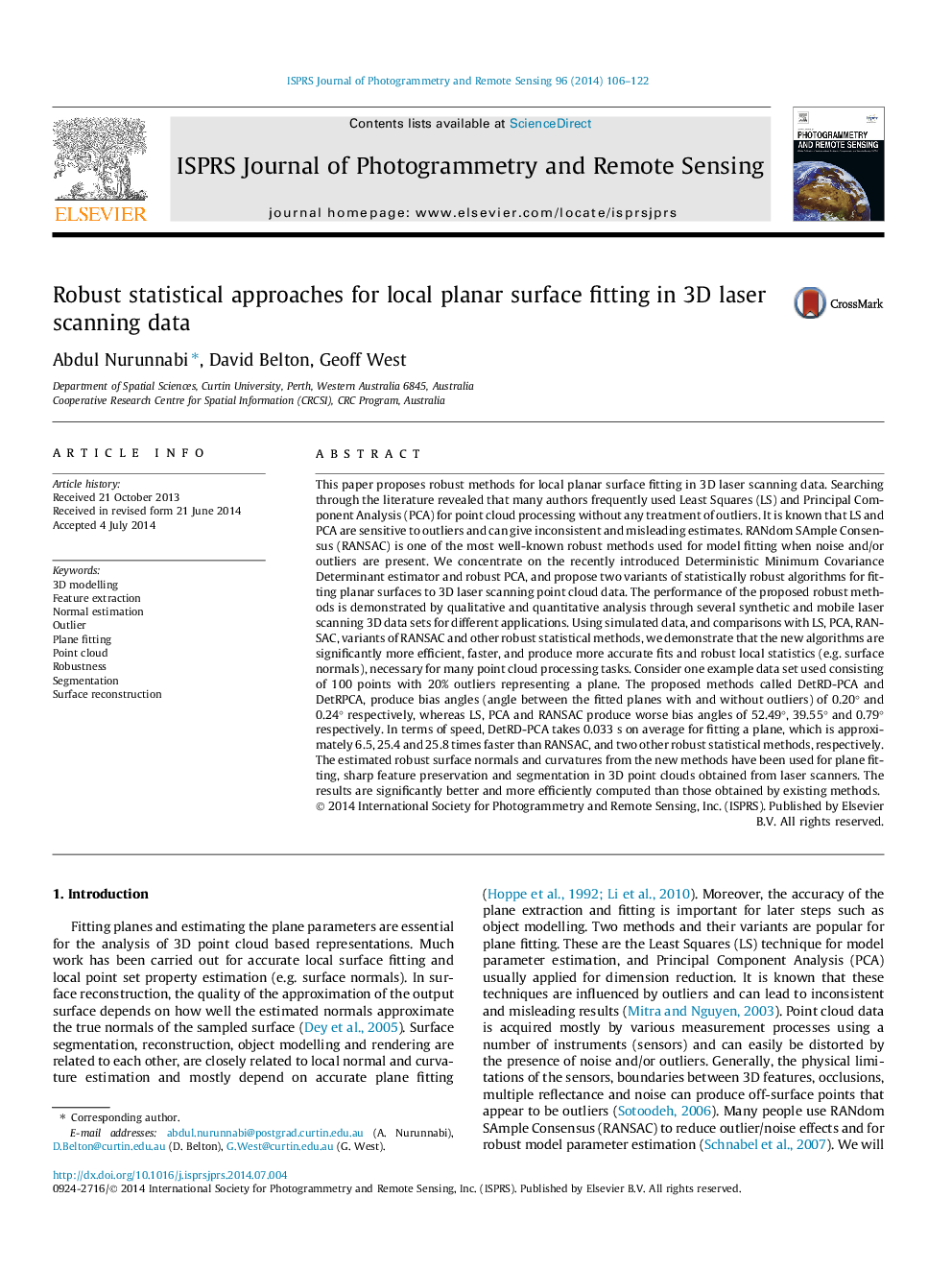| Article ID | Journal | Published Year | Pages | File Type |
|---|---|---|---|---|
| 6949580 | ISPRS Journal of Photogrammetry and Remote Sensing | 2014 | 17 Pages |
Abstract
This paper proposes robust methods for local planar surface fitting in 3D laser scanning data. Searching through the literature revealed that many authors frequently used Least Squares (LS) and Principal Component Analysis (PCA) for point cloud processing without any treatment of outliers. It is known that LS and PCA are sensitive to outliers and can give inconsistent and misleading estimates. RANdom SAmple Consensus (RANSAC) is one of the most well-known robust methods used for model fitting when noise and/or outliers are present. We concentrate on the recently introduced Deterministic Minimum Covariance Determinant estimator and robust PCA, and propose two variants of statistically robust algorithms for fitting planar surfaces to 3D laser scanning point cloud data. The performance of the proposed robust methods is demonstrated by qualitative and quantitative analysis through several synthetic and mobile laser scanning 3D data sets for different applications. Using simulated data, and comparisons with LS, PCA, RANSAC, variants of RANSAC and other robust statistical methods, we demonstrate that the new algorithms are significantly more efficient, faster, and produce more accurate fits and robust local statistics (e.g. surface normals), necessary for many point cloud processing tasks. Consider one example data set used consisting of 100 points with 20% outliers representing a plane. The proposed methods called DetRD-PCA and DetRPCA, produce bias angles (angle between the fitted planes with and without outliers) of 0.20° and 0.24° respectively, whereas LS, PCA and RANSAC produce worse bias angles of 52.49°, 39.55° and 0.79° respectively. In terms of speed, DetRD-PCA takes 0.033 s on average for fitting a plane, which is approximately 6.5, 25.4 and 25.8 times faster than RANSAC, and two other robust statistical methods, respectively. The estimated robust surface normals and curvatures from the new methods have been used for plane fitting, sharp feature preservation and segmentation in 3D point clouds obtained from laser scanners. The results are significantly better and more efficiently computed than those obtained by existing methods.
Keywords
Related Topics
Physical Sciences and Engineering
Computer Science
Information Systems
Authors
Abdul Nurunnabi, David Belton, Geoff West,
